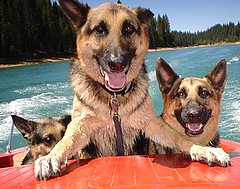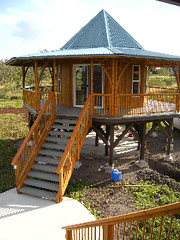OR Wish I Could Shuck 'em As Fast As I Can Eat 'em!
“If you don't love life you can't enjoy an oyster; there is a shock of freshness to it and intimations of the ages of man, some piercing intuition of the sea and all its weeds and breezes. They shiver you for a split second.” —Eleanor Clark
About 180 miles or 4 hours east on US 98 from Good Haven House is Apalachicola Bay, thirty miles of shallow oyster paradise on the Florida panhandle. This bay produces 90 percent of Florida’s oysters.
Fortunately for us, the Gulf Oil Spill did not affect the Apalachicola Bay oyster beds. Chances are, if you’re eating an oyster anywhere around Pensacola, you’re eating an Apalachicola oyster.
"The oysters from Apalachicola are among the best in the nation." Says noted food writer John T. Edge. "They are fat, abundant, rich, and lusty. The oysters are both sweet and salty, and it's the interplay of the freshwater of the river and the salt water from the Gulf, forming an estuary, that makes the difference and sustains these vibrant oysters. It's about the confluence of that river and the Gulf of Mexico. The uniqueness of that combination, along with the timeless appeal of the fishing village of Apalachicola, is hard to match anywhere in the country.
Explore an interactive map of oyster regions across the country.

Oysters are heavy drinkers! Oysters are filter feeders. An adult oyster can filter 25 gallons or more of water per day in search of food. In doing so, they remove things like toxins, algae and extra nutrients that flow off the land into nearby saltwater.
Besides the essential job of filtering water, oysters provide habitat for lots of other species.
See why oyster reefs matter.
And now for the most important part, the eating of the oyster! Barring a 4 hour drive east,
you can get you some of this oystery goodness a little closer to home at:
The Original Point Restaurant
The Oyster Bar
Atlas Oyster House
The Shrimp Basket (call ahead 850 492 1970 and ask when 25 cent oyster night is)
Save some for me!
Susan













No comments:
Post a Comment
LOVE to hear from you!